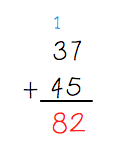Math Update: We are off to a great start with our wonderful math program. During the first two weeks of school, we’ve been visualizing, representing, and breaking apart numbers using a variety of math tools: counters, stair steppers, and number cards. When we break apart a number, we take a larger number and split it into two smaller numbers. We call the two smaller numbers partners because when we add them together they equal the larger number. So far we’ve discovered the partners for 2, 3, 4, 5 and 6. Thank you for helping your child complete the math homework. This important practice reinforces what is taught in the classroom each day.
Reading Update: This week, we began readers’ workshop. We have enjoyed reading some great stories together and have started building the foundation of our independent reading time. Readers get better by reading just right books, so we’ve focused this week on choosing books that we can read and that we enjoy.
Writing Update: During Writer’s Workshop, our class has been writing small moment stories. A small moment story is a true story from our own experiences. We learned how writers plan their stories by thinking of an idea, sketching a quick picture for the beginning, middle, and end, and then writing the words. We also learned that good writers always keep working. We use the phrase “When you’re done – you’ve just begun!” because good writers go back to add details to their pictures and words or they start a new story.









